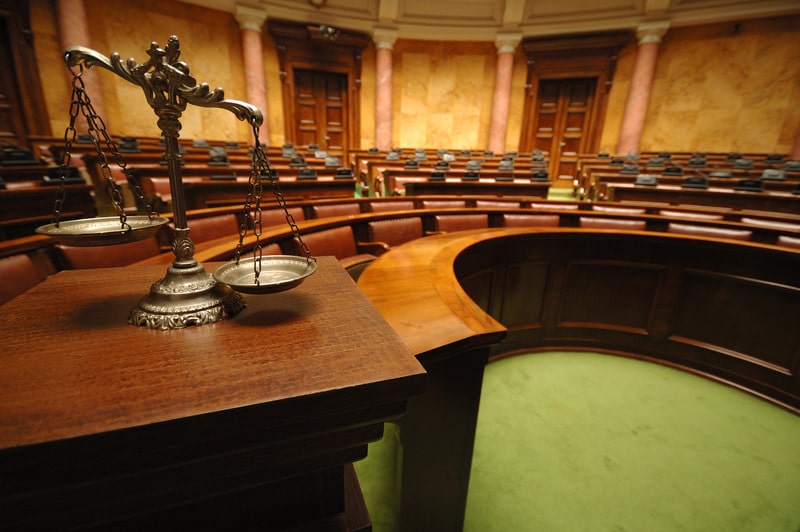
In today’s digital age, where smartphones are ubiquitous and surveillance cameras are omnipresent, capturing moments through photos and videos has become second nature to many of us. Video and photo evidence play a pivotal role in the legal process.
When correctly authenticated and presented, visual evidence can be compelling and influential in determining the outcome of court cases. But when it comes to the legal realm, many wonder, Is video evidence admissible in court?
Understanding the rules and criteria governing the acceptance of visual evidence in court proceedings, particularly in Virginia, is essential for anyone navigating the legal system.
Is Video Evidence Admissible in Court?
Video evidence has become a powerful tool in both civil and criminal cases. It can provide crucial insights, clarify events, and sometimes even be the deciding factor in a case.
However, not all video evidence is automatically admissible in court. In Virginia, as in many jurisdictions, some specific rules and criteria determine the admissibility of such evidence.
Relevance to the Case
The primary consideration for admitting photo and video evidence is its relevance to the case. Courts will only admit video evidence if it is deemed relevant to proving or disproving a disputed fact.
For example, in a personal injury case arising from a car accident, video footage from nearby surveillance cameras showing the sequence of events may be highly relevant and, therefore, admissible.
Authenticity and Accuracy
Additionally, the party presenting the video must establish its authenticity and accuracy, which involves demonstrating that the video has not been tampered with or altered in any way that would materially affect its meaning or interpretation. Authentication typically requires testimony from a witness who can verify the origin and integrity of the video.
How It Was Obtained
Moreover, how the party obtained the video evidence may also impact its admissibility. Evidence obtained unlawfully or that violates someone’s reasonable expectation of privacy may be deemed inadmissible. For instance, video obtained through illegal surveillance or unauthorized access to private property may be excluded from court proceedings.
Types of Video and Photo Evidence That May Be Admissible
There are many ways to capture and present admissible visual evidence for court. Here are some of the most common examples.
Surveillance Footage
Typically, this includes recordings from security cameras installed in public places, businesses, residences, and other locations. Surveillance footage can capture events such as accidents, crimes, or suspicious activities, providing highly reliable visual evidence.
Body Camera Footage
Video recordings captured by law enforcement officers through body-worn cameras during interactions with the public. Body camera footage can provide crucial documentation of police encounters, arrests, and incidents, offering objective insight into the circumstances of a case.
Crime Scene Photographs
Admissible evidence may include Images taken at crime scenes by law enforcement personnel or forensic experts. These photographs document the scene’s condition, evidence markers, and any relevant details that may aid investigations or court proceedings.
Injury Photographs
Photos depicting injuries sustained by individuals involved in accidents, assaults, or other incidents are admissible. These images can serve as compelling evidence of physical harm and are often used to support claims for compensation or damages in personal injury cases.
Property Damage Documentation
Photographs showing damage to vehicles, buildings, or other property resulting from accidents, natural disasters, vandalism, or other causes may also be admissible. Property damage documentation is vital for insurance claims, civil lawsuits, and criminal investigations.
Social Media Posts
If relevant to a case, content posted on social media platforms, including photos and videos, may be admitted as evidence. Social media posts can provide insights into individuals’ activities, interactions, and behaviors, which is valuable evidence in civil and criminal proceedings.
Expert Testimony with Visual Aids
In some cases, experts in fields such as accident reconstruction, forensics, or medical science may use visual aids such as diagrams, charts, or videos to support their testimony in court. These visual presentations help explain complex concepts and enhance jurors’s understanding of essential issues.
Documentary Evidence
Video recordings or photographs of documents, such as contracts, agreements, invoices, or receipts, may be admitted as evidence to corroborate written records or establish the authenticity of transactions.
Video Evidence in Civil Cases
In civil court, where the resolution of disputes between individuals or entities occurs, the admissibility of video evidence follows similar principles as video evidence in criminal cases. The evidence must be relevant, authentic, and legally obtained to be considered admissible. However, in civil cases, the standard of proof is typically lower than in criminal cases.
While criminal cases require proof beyond a reasonable doubt, civil cases often rely on a preponderance of the evidence standard, which means that the evidence tips the scales slightly in favor of one party over the other.
In Virginia, the rules of evidence are codified in the Virginia Rules of Evidence. These rules provide a framework for the admission and exclusion of evidence in civil and criminal proceedings. Attorneys and litigants must understand and follow these rules when presenting video evidence in court.
Gain Clarity on Video and Photo Evidence Admissibility: Reach Out to River Run Law
Video and photo evidence can be valuable in legal proceedings, providing visual documentation of events and circumstances that may be crucial to a case. If you are wondering, Is video evidence admissible in court? The answer could make all the difference to your ability to recover damages in your lawsuit.
By leveraging their knowledge of evidence law, procedural rules, and courtroom strategy, attorneys play a crucial role in navigating the complexities of video and photo evidence admissibility, ensuring their client’s rights are protected.
If you have questions about the admissibility of video evidence in your case or need legal representation, don’t hesitate to contact River Run Law.
Our experienced attorneys are here to help you navigate the complexities of the legal system and protect your rights. Contact us today for a free case consultation.
Where You Can Find Our Richmond Office

